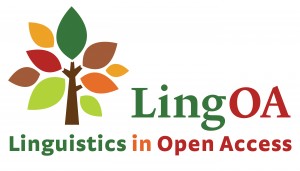Everything is drying because there is no longer Savi. Memory or the dispossession of sculptures in Mexico (Mixtec, 20th-21st.C)
DOI:
https://doi.org/10.32870/vel.vi19.173Keywords:
Mixtecs, Savi, Archaeological looting, Dispossession, MeteorosymbolsAbstract
Due to an archaeological looting that took place during the 20th century in the Mixtec town of San Juan Mixtepec, Juxtlahuaca, Oaxaca, its inhabitants were dispossessed of almost all of their sculptures called Yuu Savi, literally “Stone-Rain” in English. The objective of this article is to understand the contemporary representations of the absent statues, which the locals worshiped, mainly to ask for good rains. We will address the origins first, the denominations and characterizations, as well as the rituals and sanctuaries. Later we delve into the effects of dispossession on the different elements symbolized by the missing sculptures. The analysis is based on the Mixtec discourses of the elderly who had the opportunity to see them, when they were very young. The interviews were conducted between 2016 and 2018, mainly with monolingual people. Anthropological work on contemporary relationships between Mixtecs and rain has multiplied in recent decades, such as that of the researcher Esther Katz (2008) on the representation of rain and climate, or the various publications of the anthropologist Samuel L. Villela (1999, 2006, 2008, 2009) on ritual in Guerrero. With this article we want to contribute to this area of ??study in which there is still much to explore.
Downloads
Metrics
References
Alvarado, F. de. (1593). Vocabulario en lengua mixteca. México; Casa de Pedro Balli.
Anders, F., Jansen, M., & Pérez Jiménez, G. A. (1992). Origen e historia de los reyes mixtecos: Libro explicativo del llamado Códice Vindobonensis. México; Fondo de Cultura Económica.
Arana Osnaya, E. (1960). El idioma de los señores de Tepozcolula. Anales del Instituto Nacional de Antropología e Historia, 42(8).
Arias Vanegas, J., &Caicedo, A. (2016). Aproximaciones al despojodesdeColombia. Despojo y antropologíahoy. RevistaColombianade Antropología, Vol. 52(2), 7-15.Recuperado de https://revistas.icanh.gov.co/index.php/rca/issue/view/6
Barabas, A. M. (2008). Cosmovisiones y etnoterritorialidad en las culturas indígenas de Oaxaca. Antípoda, N° 7, Julio-diciembre.
Bartolomé, M. A., &Barabas, A. M. (2008). El pueblo ñu savi. Los mixtecos. Arqueología Mexicana, 15(90), 68–73.
Besserer, F. (1999). Lugares paradójicos de la Mixteca. Alteridades, 9(17), 29–42.
Bonnemaison, J. (2000). La géographie culturelle: Cours de l’Université Paris IV-Sorbonne, 1994-1997. Editions du C.T.H.S.
Broda, J. (2008). LeonhardSchultze-Jena y sus investigaciones sobre ritualidad en la montaña de Guerrero. Anales de Antropología, 42, 117–145.
Coggins, C. (1969). IllicitTraffic of Pre-ColumbianAntiquities. Art Journal, 29(1), 94-98.
Contel, J. (2009). Los dioses de la lluvia en Mesoamérica. Arqueología Mexicana, 96, 20–25.
Edinger, S. T. (2004). Camino de Mixtepec: Historia de un pueblo en las montañas de la Mixteca y su encuentro con la economía norteamericana. México; Asociación Cívica Benito Juárez.
Embajada de México en Francia. (2019). Le Mexiquedéplore la commercialisation de piècesarchéologiquespréhispaniques en France. Recuperado de https://embamex.sre.gob.mx
HermannLejarazu, M. A. (2008). Religiosidad y bultos sagrados en la Mixteca prehispánica. Desacatos, 27, 75–94.
- (2019). El entorno simbólico-territorial del Mapa de Teozacoalco: Representación del paisaje y sus linderos. Anales de antropología, 53(2).
INEGI. (2021). Panorama sociodemográfico de Oaxaca: Censo de Población y Vivienda 2020. Recuperado de www.inegi.org.mx
Instituto Nacional de Antropología e Historia (INAH), (2021), Boletín No 37. Las subastas de patrimonio son inadmisibles: Diego Prieto. Consultado el 14 de junio de 2021 en https://www.inah.gob.mx/
Jansen, M., & Pérez Jiménez, G. A. (2009). La Lengua Señorial de Ñuu Dzaui. Cultura literaria de los antiguos reinos y transformación colonial. México; CSEIIO.
Jiménez Osorio, L. I., &Posselt Santoyo, E. (2016). Thesanctuaries of the Rain God in theMixtecHighlands, Mexico: A reviewfromthepresent to theprecolonialpast. WaterHistory, 8(4), 449–468.
Katz, E. (2008). Vapor, aves y serpientes. Meteorología en la “Tierra de la Lluvia” (Mixteca alta, Oaxaca). En Lammel, Goloubinoff y Katz (dir.), Aires y lluvias. Antropología del clima en México. México; CIESAS.
Merlo Juárez, E. (2016). El culto a la lluvia en la Colonia. Los santos lluviosos. Arqueología Mexicana, 96, 64–68.
Monaghan, J. (1999). TheCovenantswithEarth and Rain: Exchange, Sacrifice, and Revelation in MixtecSociety. Oklahoma; University of Oklahoma Press.
Oehmichen-Bazán, C. (2020). La valoración de las culturasindígenas en el mercadoturístico: ¿apropiación, despojo o resignificación? Anales de Antropología, 54(1), 149–158.
Sánchez Cordero, J. (2013). Patrimonio cultural. Ensayos sobre cultura y derecho. México; Instituto de Investigaciones Jurídicas - UNAM.
Terraciano, K. (2013). Los mixtecos de la Oaxaca colonial: La historia ñudzahui del siglo XVI al XVIII. México; Fondo De Cultura Económica.
Villela Flores, S. L. (1998). Simbolismo y ritual en la Montaña de Guerrero. TRACE, Revue du Centre d’EtudesMexicaines et Centraméricaines (CEMCA), 33.
- (2006). Ídolos en los altares: La religiosidad indígena en la montaña de Guerrero. Arqueología mexicana, 82, 62–67.
- (2009). El culto a las deidades de la lluvia en la Montaña de Guerrero. Arqueología Mexicana, 96, marzo-abril, 69–72.
- (2018). Altares y ritualidad agrícola en la Montaña de Guerrero, México. Dimensión Antropológica, 72, 7-31.

Downloads
Published
Versions
- 2024-09-06 (2)
- 2022-06-21 (1)












